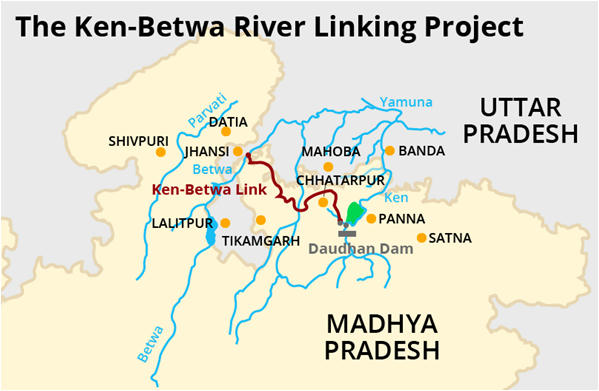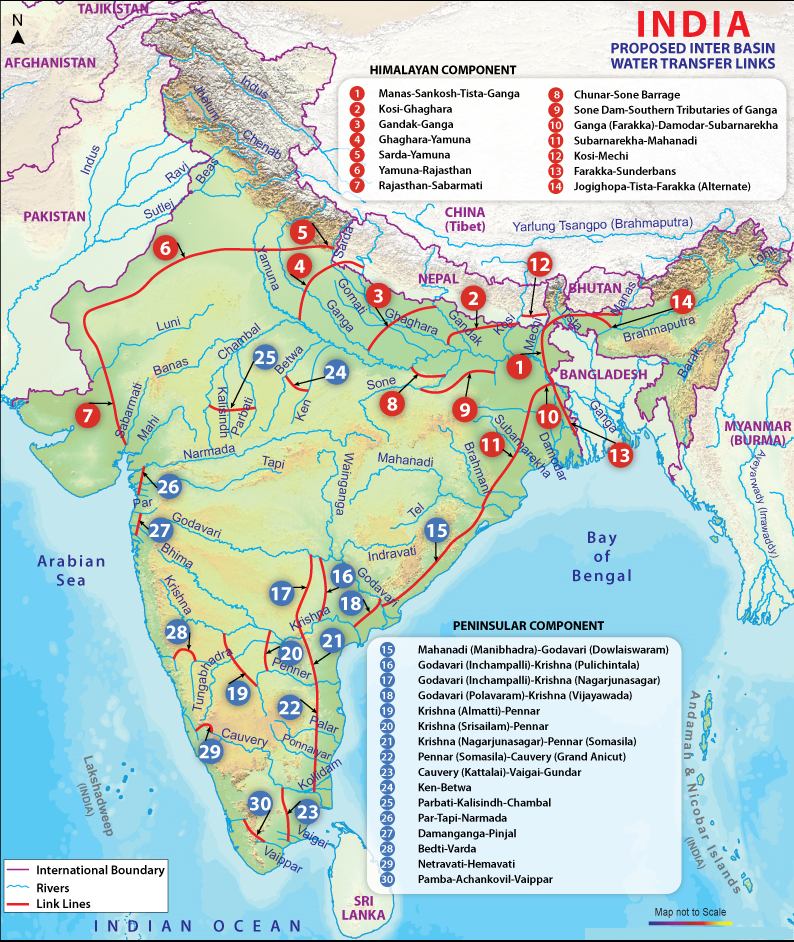CONTENTS
- Solitary Waves
- Ken-Betwa Link Project
Solitary Waves
Focus: GS III: Science and Technology
Why in News?
Recently, Indian Institute of Geomagnetism (IIG), an autonomous institute of the Department of Science and Technology (DST) has found evidence of “solitary waves” in the weak magnetic field around Mars for the first time.
What are Solitary Waves?
- Solitary waves are the distinct electric field fluctuations (bipolar or monopolar) that follow constant amplitude-phase relations.
- Their shape and size are less affected during their propagation.
Significance:
- Solitary waves have been found to play a significant role in the dynamics of various physical systems, such as in the Earth’s magnetosphere and in the Martian magnetosphere.
- In the Earth’s magnetosphere, they are known to be responsible for the energization and transport of plasma particles, which can affect the behaviour of satellites and other space-borne equipment.
- In the Martian magnetosphere, their significance is not fully understood yet, but it has been suggested that they may play a role in the loss of atmospheric ions on Mars.
About Mars
- Mars is the fourth planet from the Sun and the second-smallest planet in the Solar System, being larger than only Mercury.
- It is named after the Roman god of war and is often referred to as the “Red Planet” due to the iron oxide on its surface that gives it a reddish appearance.
- Mars is a terrestrial planet with a thin atmosphere and surface features similar to the impact craters of the Moon and the valleys, deserts, and polar ice caps of Earth.
- The days and seasons on Mars are similar to those on Earth because the rotational period and tilt of the rotational axis relative to the ecliptic plane are similar.
- Mars is home to Olympus Mons, the largest volcano and highest known mountain on any planet in the Solar System, as well as Valles Marineris, one of the largest canyons in the Solar System.
Ken-Betwa Link Project
Focus: GS III- Environment
Why in News?
Recently, The Third Meeting of Steering Committee of Ken-Betwa Link Project (SC-KBLP) was held at Vigyan Bhawan, New Delhi.
Interlinking of Rivers
- In 1858, Arthur Cotton (British general and irrigation Engineer) came up with even more ambitious proposals such as connecting all major rivers of India, and interlinking of canals and rivers. He suggested drought-relief measures for Odisha.
- The National River Linking Project (NRLP) formally known as the National Perspective Plan, envisages the transfer of water from water ‘surplus’ basins where there is flooding, to water ‘deficit’ basins where there is drought/scarcity, through inter-basin water transfer projects.
- The interlinking of river project is a Civil Engineering project, which aims to connect Indian rivers through reservoirs and canals.
- The farmers will not have to depend on the monsoon for cultivation and also the excess or lack of water can be overcome during flood or drought.
- Since the 1980s, the interlinking project has been managed by India’s National Water Development Agency (NWDA) under the Ministry of Water Resources.
- It has been split into three parts as follows:
- A northern Himalayan river interlink component.
- A southern peninsular component.
- An Intra-State river linking component.
As of now, six ILR projects have been under examination of the authorities:
- Ken-Betwa,
- Damanganga- Pinjal,
- Par-Tapi-Narmada,
- Manas-Sankosh-Teesta-Ganga,
- Mahanadi-Godavari and
- Godavari-Cauvery (Grand Anicut)
- With regard to the peninsular rivers, the Centre has chosen to focus on the Godavari-Cauvery link.
What is the Ken-Betwa Link Project?


- The Ken-Betwa Link Project is the first project under the National Perspective Plan for interlinking of rivers.
- KBRIL is a river-interlinking project that aims to transfer surplus water from the Ken river in Madhya Pradesh to Betwa in Uttar Pradesh to irrigate the drought-prone Bundelkhand region.
- Both Ken and Betwa are the tributaries of the Yamuna.
- The Ken-Betwa Link Canal will be 221 km long, including a 2-km long tunnel.
A Special Purpose Vehicle (SPV) for the project
- According to the statement, a Special Purpose Vehicle (SPV) called Ken-Betwa Link Project Authority (KBLPA) will be set up to implement the project.
- In fact, the Centre has set in motion the process of creation of National Interlinking of Rivers Authority (NIRA), an independent autonomous body for planning, investigation, financing and implementation of the interlinking of river (ILR) projects in the country.
- The NIRA will have powers to set up SPV for individual link projects.
Which regions will benefit from the Ken-Betwa Link Project?
- The project lies in Bundelkhand, a drought-prone region, which spreads across 13 districts of Uttar Pradesh and Madhya Pradesh.
- According to the Jal Shakti Ministry, the project will be of immense benefit to the water-starved region, especially the districts of Panna, Tikamgarh, Chhatarpur, Sagar, Damoh, Datia, Vidisha, Shivpuri and Raisen of Madhya Pradesh, and Banda, Mahoba, Jhansi and Lalitpur of Uttar Pradesh.
- “It will pave the way for more interlinking of river projects to ensure that scarcity of water do inhibitor for development in the country,” the Ministry said in a statement.



